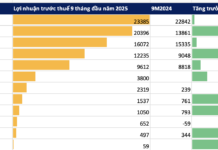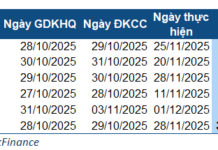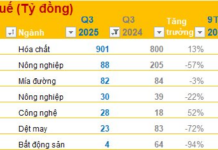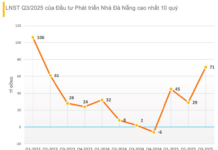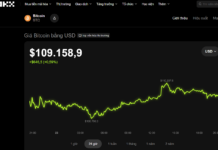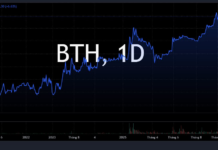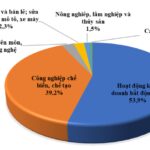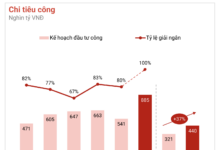
The General Statistics Office’s report for July and the first seven months of the year shows a positive trend in the socio-economic situation, with better results than the same period last year across most sectors.
The economy continued its positive growth trajectory in all three sectors. Agriculture remained stable, while the service sector saw a notable increase; total retail sales of goods and consumer services rose by 9.4% in July and 8.7% in the seven-month period.
Notably, the industrial sector demonstrated a strong recovery; it increased by 0.7% compared to June and 11.2% from the previous year. Overall, it grew by 8.5% in the first seven months. Moreover, the Purchasing Managers’ Index (PMI) for July 2024 reached 54.7 points, the highest since November 2018, with significant growth in output and new orders.
The macroeconomy remained stable, with inflation under control and a balanced fiscal situation. The consumer price index (CPI) averaged a 4.12% increase in the seven-month period, a 0.04% rise compared to June. Exchange rates and interest rates were generally stable. Energy and food security were ensured (rice exports reached 5.18 million tons, with a turnover of nearly $3.3 billion); the labor market recovered well, and labor supply and demand were mostly balanced.

Master Nguyen The Trung, CEO of John&Partners
Exports continued to rise, resulting in a substantial trade surplus that contributed to a positive balance of payments. July’s exports increased by 6.7% compared to June and 19.1% from the previous year. Overall, exports grew by 15.7% in the seven-month period, while imports rose by 18.5%, resulting in a trade surplus of $14.08 billion.
State budget revenue witnessed a significant increase, and the financial and budgetary situation continued to improve. Total state budget revenue for the seven months reached an estimated 69.8% of the annual plan, a 14.6% rise compared to the same period last year. At the same time, $87.2 billion in taxes, fees, and charges were exempted.
Public debt, government debt, external debt, and budget deficits were kept below the prescribed limits. Tourism recovered strongly, surpassing pre-pandemic levels. In the first seven months, international arrivals reached nearly 10 million, a 51% increase compared to the same period and a 1.9% rise compared to 2019 before the COVID-19 pandemic.
Development investment continued to yield positive results, creating momentum for growth. FDI attraction reached $18 billion, a 10.9% increase, while realized FDI capital was $12.55 billion, an 8.4% rise and the highest in the past five years.
Business development maintained its positive trend. Specifically, 14,700 new businesses were registered in July, a 7.3% increase compared to the same period. Overall, 139,500 new and re-entering businesses were established in the seven-month period, a 5.9% rise from last year.

In contrast to the positive macroeconomic situation, the Vietnamese stock market experienced a disappointing trading session on Monday, August 5, with 854 declining stocks, including 84 hitting the floor price. The VN-Index once again fell below the 1,200-point threshold, closing at 1,188.07, a decrease of 48.53 points (-3.92%).
In terms of points, this was the second time this year that the main index lost more than 40 points (on April 15, it dropped by nearly 60 points). Liquidity improved, with the matched order value on the HOSE reaching over VND22,000 billion, a 40% increase compared to the previous trading session.
GDP growth and stock market fluctuations are often considered essential indicators of a country’s economic health. However, according to Master Nguyen The Trung, these two factors do not always exhibit a strong correlation.
For instance, in 2018 and 2022, Vietnam’s economy recorded impressive growth, but the VNINDEX plummeted. Mr. Trung attributes this contradiction to several reasons. Taking 2018 as an example, concerns about the trade war and the shift of capital to safe-haven investments led to significant declines in markets like Vietnam and China.
“In reality, there are numerous reasons why positive macroeconomic indicators (e.g., high GDP growth) may not significantly impact stock market performance,” said the CEO of John&Partners.
|
Year |
GDP Growth Rate (%) |
VNINDEX Growth Rate (%) |
|
2015 |
6.7 |
6.12 |
|
2016 |
6.2 |
14.8 |
|
2017 |
6.8 |
48.03 |
|
2018 |
7.1 |
-9.31 |
|
2019 |
7.0 |
7.67 |
|
2020 |
2.9 |
14.87 |
|
2021 |
2.6 |
35.73 |
|
2022 |
8.0 |
-33.83 |
|
2023 |
5.0 |
12.2 |
Table: Vietnam’s GDP Growth and VNINDEX Performance
The first reason lies in the different compositions of the indices. Specifically, GDP measures a country’s total economic output, encompassing both goods and services production. Conversely, stock market indices like the VNINDEX primarily reflect the performance of publicly traded companies. Therefore, GDP may include sectors not represented in the stock market. It is worth noting that Vietnam is aiming for 1 million operating businesses, while only about 2,000 are publicly traded.
The second factor is market expectations and speculation. Stock prices are heavily influenced by investors’ expectations and speculative activities regarding companies’ future performance. However, these expectations do not always directly reflect the current economic situation that GDP measures.
For instance, concerns about escalating conflicts and their potential impact on Vietnam’s economy may not necessarily translate into reality. Still, as Mr. Trung explains, the worries themselves (whether valid or not) can create a ripple effect, leading to risk-averse investors selling off their stock holdings.
The third reason is indirect investment flows. According to Mr. Trung, indirect investment flows (FII) seek out markets with potential. While strong FII inflows can boost a stock market, they may not significantly impact GDP growth.
Consequently, when a market is challenging to “sell,” fund managers may struggle to convince foreign investors to invest, leading to net selling. In Vietnam, by the end of Q2 2024, foreign investors had net sold approximately $2 billion, putting downward pressure on stock prices.
Lastly, monetary policies, particularly interest rates, significantly impact the stock market. However, these policies may not immediately affect GDP growth and often have a time lag or an unclear impact.

Based on several studies from other markets, such as India and frontier markets: “Stock Prices and GDP in Emerging Markets: The Case of India” by Kumar, R. (2013); and “Stock Market Development and Economic Growth: Empirical Evidence from Some Frontier Markets” by Osamwonyi, I. O. and Kasimu, A. (2013), Master Nguyen The Trung points out that stock markets can grow independently of GDP due to factors such as financial development and investor sentiment.
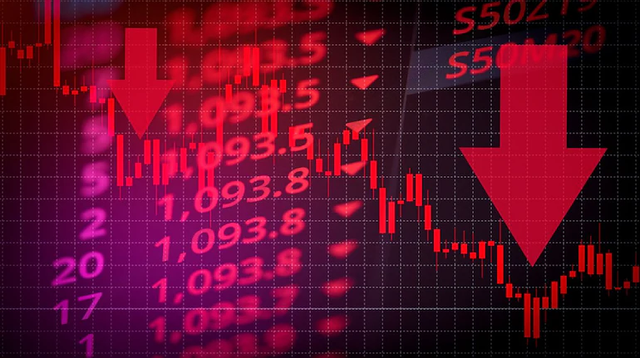
“Kumar’s study on the relationship between stock prices and GDP in India found that the stock market often moves independently of GDP growth due to speculative activities and market expectations. Similarly, in Vietnam, the VNINDEX does not directly reflect annual GDP growth but is influenced by various other factors,” said the expert.
While GDP growth and stock market performance are both crucial indicators of a country’s economic health, they do not exhibit a strong correlation. Differences in composition, market expectations, the impact of indirect investment flows, and monetary policies are the main factors explaining this lack of correlation. Studies from other markets also support the notion that stock markets can be influenced by factors beyond GDP growth.

Overall, Master Nguyen The Trung suggests that investors have a wide range of investment options, including stocks, bonds, real estate, startup investments, and even direct investments in businesses or franchise acquisitions.
“During periods of robust economic growth but uncertain stock market conditions, investors should remember that stocks are just one of many investment options,” advises the CEO of John&Partners.
Additionally, each investor has unique expectations, risk tolerance, knowledge, financial resources, and needs. Therefore, Mr. Trung recommends finding a suitable broker to provide personalized advice and, ideally, seeking wealth management consultants for a comprehensive analysis and expansion of investment options.
EBITDA Continuously Increases for 4 Quarters, WinCommerce Plans to Open 700 More Stores
In 2023, despite the challenges both domestically and internationally, the retail market in Vietnam is gradually becoming a lucrative investment opportunity and a fiercely competitive battleground. Amidst this backdrop, WinCommerce (a subsidiary of Masan Group) emerges as the solution for an optimized store model, expanding networks, and sustaining market share for Vietnamese businesses…
Prime Minister: State-owned enterprises holding substantial resources need to be profitable
On the morning of February 5th, Prime Minister Pham Minh Chinh emphasized the importance of profitable operations and increased contributions to GDP growth and the state budget by working with 19 conglomerates and state-owned enterprises. These businesses possess significant resources and must strive to generate more profits.






